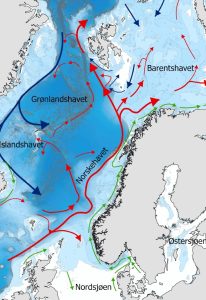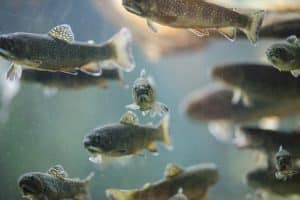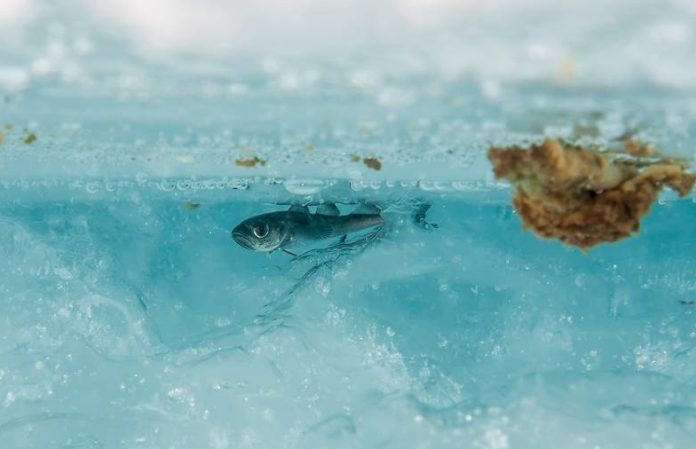Climate change is predicted to have a major impact on the Nordic Sea areas. UNRIC has interviewed Geir Ottersen, climate impact researcher and project manager for the new report “Climate change and impacts for the Nordic seas”.
The report was submitted to the Ministry of Climate and Environment last week and aims to provide decision-makers in the Nordic countries with the best possible knowledge base on climate change and its effects on the Nordic Sea areas.
The Nordic Sea areas are vulnerable to climate changes

The Nordic Sea areas have characteristics that make them particularly vulnerable to future climate changes. The sea areas stand out not only from other sea areas but also from one another. It is therefore crucial to investigate how climate changes in the Nordic region will develop, and what consequences they will have. Geir Ottersen has led the report that specifically only covers the Nordic seas.
Each of the Nordic seas faces major challenges, but the greatest climate changes are expected to affect the Barents Sea and the most northern parts of the Greenland, Iceland, and Norwegian Seas. These are sea areas that up until now are covered by ice for large parts of the year, which ecosystems have adapted to.
Reduced ice cover
-Some of the biggest climate changes in the world are expected in the northern sea areas. These are linked to increased ocean temperatures and reduced ice cover, Ottersen explains. Usually, there has been ice, but in the last 10-15 it has started to melt. Once it has become a dark sea, it attracts more sunlight, which gives more energy to the ocean. This amplifies the warming and poses challenges for marine life.

People will notice the climate changes in the North Sea the most, where the situation is considerably different. The sea area is surrounded by large cities and densely populated countries and has an extensive total load from a variety of human impacts, from shipping to runoff from land. In addition to this, we have big climate changes. The changes are expected to cause a 30% reduction in plant lance, which lays the foundation for much marine life. Furthermore, other species such as Merluccius are expected to replace cod, which is one of the most important food fish in the North Sea.
The Baltic Sea already faces several challenges related to oxygen deprivation and high levels of nutrient salts. Although moderate changes in salinity often have little impact on marine life in open sea areas, the Baltic Sea is unusually fresh to be an ocean. This has created major challenges for fish stocks living in the sea, such as cod. – In the worst-case scenario, the sea can be drastically different, which means that the fish that currently live there will not survive.
Major impacts on ecosystems and fisheries resources

The IPCC Sixth Assessment Report has warned that marine heat waves are a threat to marine life, which are episodes of sharp increases in ocean temperature, which can affect organisms and ecosystems very negatively. From 1982-2020, half of all days with heat wave status occurred in the Barents Sea over the past decade. Ottersen warns about how heat waves in the ocean can create very harsh conditions for polar cod and farmed salmon.
-There will be large impacts on ecosystems, and fish are starting to encounter situations they have never experienced before. For farmed salmon in the far south, the threat is that it may become too hot. A serious scenario is an increased and massive mortality for farmed salmon,” says Ottersen.
The Polar cod

The polar cod lives in the far north, and its way of living is connected to ice. When the ice melts, there will be major changes for the species. -The polar cod will most likely not be extinct, but it could be much less of the specie. They also don’t have anywhere to escape if the ice completely melts over large areas.
Nevertheless, different species will be affected by climate changes in different ways. – Warmer Barents Sea temperatures will benefit haddock, but they will cause serious problems for polar cod.
One of the report’s main messages is that if we manage to limit greenhouse gas emissions over the next 10-30 years, it could make a significant difference.






